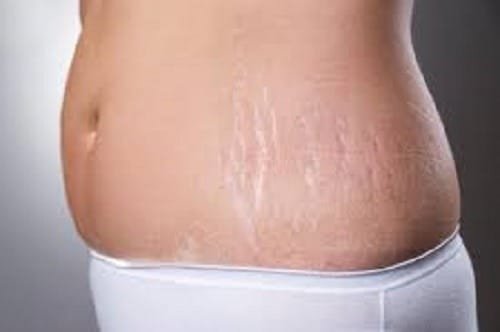Everything You Need to Know About Stretch Mark and its Treatment
Stretch marks, also known as striae or striae distensae, are a common skin condition that affects many people at various stages of life. They appear as streaks or lines on the skin and can vary in color from red to purple to silver. This comprehensive guide will delve into what is stretch mark are, its causes, and effective treatments to manage and reduce their appearance.
Understanding Stretch Mark
What Are Stretch Marks?
Stretch marks are a type of scar that develops when the skin stretches or shrinks rapidly. The skin’s elasticity is compromised, leading to damage in the dermal layer (the middle layer of skin). This damage results in the characteristic streaks or lines.
How Do Stretch Marks Develop?
- Skin Structure: The skin consists of three main layers—epidermis (outer layer), dermis (middle layer), and subcutaneous tissue (inner layer). Stretch marks occur when the dermis is stretched too quickly and loses its elasticity.
- Formation Process: As the dermis is stretched, the collagen and elastin fibers break down, creating inflammation and leading to the formation of stretch marks. Initially, they may appear red, purple, or dark brown, but over time, they usually fade to a lighter shade.
Causes of Stretch Mark
Stretch marks can arise from a variety of factors, including:
1. Rapid Weight Changes
- Weight Gain: Gaining weight quickly can stretch the skin beyond its capacity, resulting in stretch marks. This is common during periods of significant weight gain.
- Weight Loss: Rapid weight loss can also lead to stretch marks as the skin may not shrink back to its original state quickly enough.
2. Pregnancy
- Hormonal Changes: Pregnancy causes significant changes in the body, including rapid weight gain and hormonal fluctuations. These factors can contribute to the development of stretch marks, particularly on the abdomen, breasts, and thighs.
3. Puberty
- Growth Spurts: Adolescents experience rapid growth during puberty, which can stretch the skin, especially in areas like the back, legs, and arms.
4. Hormonal Changes
- Corticosteroids: Long-term use of corticosteroid creams or medications can affect collagen production in the skin, leading to stretch marks.
- Hormonal Disorders: Conditions such as Cushing’s syndrome and Marfan syndrome can also contribute to the development of stretch marks.
5. Genetic Predisposition
- Family History: If your parents or siblings have stretch marks, you may be more likely to develop them as well due to genetic factors.
6. Medical Conditions
- Ehlers-Danlos Syndrome: This genetic condition affects connective tissue, leading to increased skin elasticity and a higher likelihood of developing stretch marks.
Prevention and Treatment Options
While it’s challenging to prevent stretch marks entirely, there are several strategies and treatments that can help minimize their appearance and manage new ones.
1. Moisturizing and Hydration
- Hydration: Keeping your skin well-hydrated can improve its elasticity. Drink plenty of water throughout the day to maintain overall skin health.
- Moisturizers: Regularly applying moisturizers, especially those containing ingredients like cocoa butter, shea butter, or hyaluronic acid, can help keep the skin supple and may reduce the risk of stretch marks.
2. Topical Treatments
- Retinoid Creams: Retinoid creams, such as tretinoin, can help promote collagen production and improve the appearance of existing stretch marks. These are most effective when used in the early stages of development.
- Vitamin E and C: Products containing vitamin E and vitamin C can support skin repair and improve the appearance of stretch marks.
- Hyaluronic Acid: This ingredient helps retain skin moisture and can contribute to the improvement of stretch marks.
3. Medical Treatments
- Laser Therapy: Laser treatments can stimulate collagen production and improve skin texture and color. This method is often used for more severe or persistent stretch marks.
- Microneedling: This procedure involves using tiny needles to create micro-injuries in the skin, which promotes collagen production and can improve the appearance of stretch marks.
- Chemical Peels: Chemical peels involve applying a solution to the skin that exfoliates the outer layer, which can help reduce the visibility of stretch marks over time.
- Platelet-Rich Plasma (PRP) Therapy: PRP therapy uses your blood’s platelets to promote healing and stimulate collagen production in the skin.
4. Lifestyle and Dietary Changes
- Healthy Diet: Consuming a diet rich in vitamins and minerals, particularly those that support skin health like vitamins A, C, and E, can aid in skin repair and elasticity.
- Regular Exercise: Engaging in regular physical activity can help manage weight and improve skin tone, which may reduce the likelihood of developing new stretch mark.
5. Avoiding Risk Factors
- Corticosteroid Use: Avoid prolonged use of corticosteroid creams or medications unless prescribed by a healthcare professional.
- Rapid Weight Changes: Aim for gradual weight changes through balanced diet and exercise to minimize the risk of developing stretch mark.
Conclusion
Stretch marks are a common skin condition that can result from various factors, including rapid weight changes, pregnancy, puberty, hormonal fluctuations, and genetic predisposition. While they are not harmful and do not require medical treatment, many people seek ways to reduce their appearance or prevent new ones from forming. By employing preventive measures, topical treatments, medical therapies, and maintaining a healthy lifestyle, you can effectively manage and reduce the visibility of stretch mark. For personalized advice and treatment options, consult with a dermatologist or healthcare provider to find the most suitable approach for your needs.
Thanks for visiting Gymbag4u.com
You may also love reading our following articles. https://gymbag4u.com/healthy-calorie-count-by-age-and-profession-its-maintenance/ and https://gymbag4u.com/avocado-nutrition-facts-and-health-benefits-with-nutritional-value/ and https://gymbag4u.com/egg-nutrition-facts-health-benefits-of-eggs-eating-daily/
